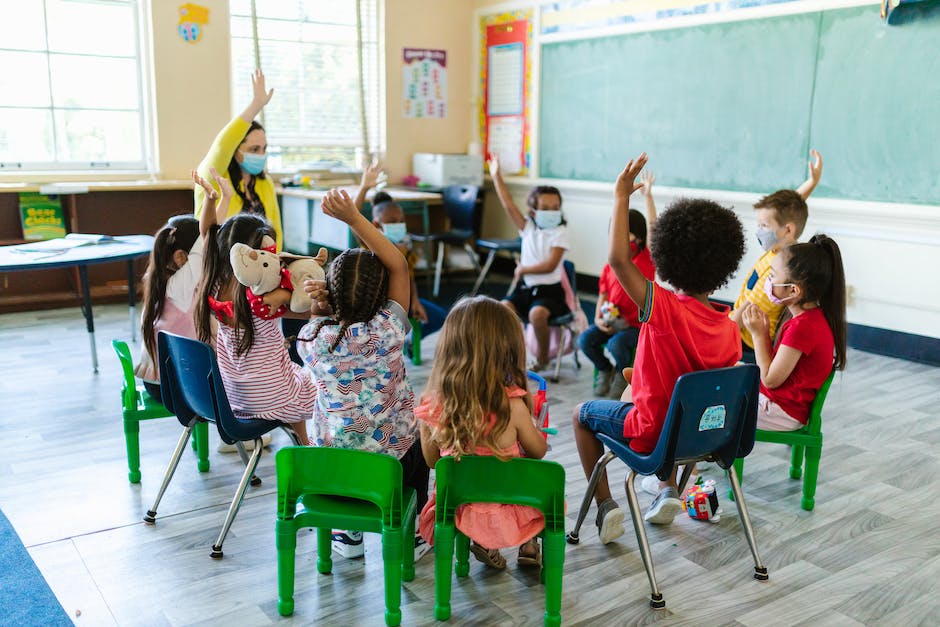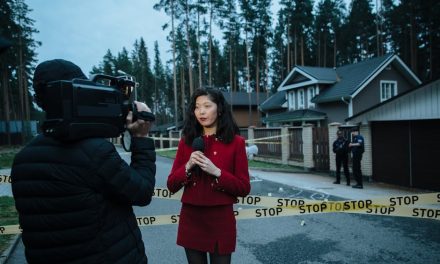Table of Contents
“Unlocking Team Potential: Elevate Collaboration with OKRs through Engaging Activities”
Introduction
Introduction:
Enhancing collaboration within a team is crucial for achieving organizational goals and fostering a positive work environment. One effective approach to promote collaboration is through the use of Objectives and Key Results (OKRs). OKRs provide a framework for setting and tracking goals, aligning team members, and enhancing communication. To further strengthen collaboration and teamwork, incorporating team building activities into the OKR process can be highly beneficial. These activities not only foster a sense of camaraderie and trust among team members but also encourage creativity, problem-solving, and effective communication. In this article, we will explore 20 team building activities that can be integrated with OKRs to enhance collaboration and drive success within teams.
Icebreaker activities for team building

Enhancing Collaboration with OKRs: 20 Team Building Activities
Icebreaker activities for team building
In today’s fast-paced and competitive business environment, collaboration is key to success. When teams work together effectively, they can achieve great things and drive the organization towards its goals. One powerful tool that can enhance collaboration is the use of Objectives and Key Results (OKRs). OKRs provide a framework for setting and tracking goals, aligning teams, and fostering a culture of transparency and accountability. To further strengthen collaboration within teams, icebreaker activities can be used to break down barriers, build trust, and encourage open communication. In this article, we will explore 20 icebreaker activities that can help enhance collaboration with OKRs.
1. Two Truths and a Lie: Each team member shares two true statements and one false statement about themselves. The rest of the team tries to guess which statement is the lie. This activity encourages team members to get to know each other better and builds trust.
2. Human Bingo: Create a bingo card with different characteristics or experiences (e.g., has traveled to another country, speaks more than one language). Team members mingle and try to find someone who matches each characteristic, marking off the squares on their card. This activity promotes networking and encourages team members to find commonalities.
3. Desert Island: Ask team members to imagine they are stranded on a desert island and can only bring three items with them. They must discuss and agree on the three items as a team. This activity encourages collaboration, problem-solving, and decision-making.
4. Marshmallow Challenge: Teams are given a limited amount of time to build the tallest freestanding structure using only spaghetti, tape, string, and a marshmallow. This activity promotes teamwork, creativity, and innovation.
5. Scavenger Hunt: Create a list of items or tasks that teams must find or complete within a given time frame. This activity encourages collaboration, problem-solving, and time management.
6. Team Trivia: Divide the team into smaller groups and create a trivia game with questions related to the organization, industry, or team members’ interests. This activity promotes teamwork, knowledge sharing, and friendly competition.
7. Paper Airplane Contest: Teams compete to build the farthest flying paper airplane using a limited set of materials. This activity encourages creativity, teamwork, and problem-solving.
8. Blindfolded Obstacle Course: One team member is blindfolded, and the rest of the team guides them through an obstacle course using only verbal instructions. This activity promotes trust, communication, and teamwork.
9. Team Jigsaw Puzzle: Divide a jigsaw puzzle into multiple pieces and give each team member a piece. The team must work together to assemble the puzzle. This activity promotes collaboration, problem-solving, and patience.
10. Team Building Bingo: Create a bingo card with different team building activities (e.g., trust fall, group hug). Teams must complete the activities to mark off the squares on their card. This activity encourages teamwork, communication, and trust.
11. Human Knot: Team members stand in a circle, reach out and grab hands with two different people across the circle. Without letting go of hands, the team must untangle themselves to form a circle again. This activity promotes communication, problem-solving, and teamwork.
12. Team Cheers: Each team member creates a unique cheer or chant that represents their team. Teams take turns performing their cheers, fostering team spirit and unity.
13. Team Building Pictionary: Teams take turns drawing and guessing team building-related words or phrases. This activity promotes creativity, communication, and teamwork.
14. Team Building Charades: Similar to Pictionary, teams act out team building-related words or phrases without speaking. This activity promotes creativity, communication, and teamwork.
15. Team Building Olympics: Organize a series of team building challenges (e.g., relay race, tug of war) and keep score to determine the winning team. This activity promotes teamwork, friendly competition, and collaboration.
16. Team Building Storytelling: Each team member contributes a sentence or two to create a collaborative story. This activity promotes creativity, communication, and teamwork.
17. Team Building Reflection: After completing a team building activity, teams gather to reflect on what they learned, how they worked together, and how they can apply those lessons to their work. This activity promotes self-awareness, continuous improvement, and collaboration.
18. Team Building Feedback: Teams provide constructive feedback to each other on their collaboration, communication, and problem-solving skills. This activity promotes open communication, trust, and growth.
19. Team Building Appreciation: Each team member shares something they appreciate about another team member. This activity promotes positivity, gratitude, and team bonding.
20. Team Building Action Plan: Teams create an action plan with specific steps they will take to enhance collaboration and achieve their OKRs. This activity promotes goal setting, accountability, and teamwork.
In conclusion, icebreaker activities can play a crucial role in enhancing collaboration within teams using OKRs. By breaking down barriers, building trust, and encouraging open communication, these activities create a solid foundation for teams to work together effectively towards their goals. Whether it’s through games, challenges, or reflection, icebreakers can foster a culture of collaboration, innovation, and continuous improvement.
Problem-solving activities for fostering collaboration
Enhancing Collaboration with OKRs: 20 Team Building Activities
Problem-solving activities for fostering collaboration
Collaboration is a crucial aspect of any successful team. When team members work together effectively, they can achieve remarkable results. However, fostering collaboration can sometimes be challenging, especially when team members have different personalities and work styles. One effective way to enhance collaboration within a team is by using Objectives and Key Results (OKRs). OKRs provide a framework for setting goals and measuring progress, and they can also be used to facilitate team building activities that promote problem-solving and collaboration. In this article, we will explore 20 team building activities that can help enhance collaboration using OKRs.
1. The Marshmallow Challenge: In this activity, teams are given 20 sticks of spaghetti, one yard of tape, one yard of string, and one marshmallow. The objective is to build the tallest freestanding structure using only these materials. This activity encourages teams to collaborate, communicate, and problem-solve together.
2. The Human Knot: In this activity, team members stand in a circle and hold hands with two people across from them. The objective is to untangle the human knot without letting go of each other’s hands. This activity requires effective communication, problem-solving, and collaboration.
3. The Egg Drop Challenge: In this activity, teams are given a limited set of materials and must design a contraption that will protect an egg from breaking when dropped from a certain height. This activity encourages teams to work together, think creatively, and problem-solve.
4. The Blindfolded Obstacle Course: In this activity, team members are blindfolded and must navigate through an obstacle course with the help of their teammates’ instructions. This activity promotes trust, communication, and collaboration.
5. The Escape Room: In this activity, teams are locked in a room and must solve a series of puzzles and riddles to escape within a certain time limit. This activity requires teams to work together, think critically, and communicate effectively.
6. The Tower of Hanoi: In this activity, teams must move a tower of disks from one peg to another, following specific rules. This activity promotes problem-solving, collaboration, and strategic thinking.
7. The Paper Tower Challenge: In this activity, teams are given a limited number of sheets of paper and must build the tallest freestanding tower using only these materials. This activity encourages teams to collaborate, communicate, and think creatively.
8. The Minefield: In this activity, team members are blindfolded and must navigate through a “minefield” (a designated area with obstacles) with the help of their teammates’ instructions. This activity promotes trust, communication, and collaboration.
9. The Lego Challenge: In this activity, teams are given a set of Lego bricks and must work together to build a specific structure within a given time limit. This activity encourages teams to collaborate, think creatively, and problem-solve.
10. The Scavenger Hunt: In this activity, teams are given a list of items or clues and must work together to find them within a certain time limit. This activity promotes collaboration, communication, and problem-solving.
11. The Puzzle Challenge: In this activity, teams are given a puzzle and must work together to solve it within a given time limit. This activity encourages teams to collaborate, think critically, and communicate effectively.
12. The Trust Fall: In this activity, team members take turns falling backward, trusting their teammates to catch them. This activity promotes trust, communication, and collaboration.
13. The Balloon Tower Challenge: In this activity, teams are given a limited number of balloons and must build the tallest freestanding tower using only these materials. This activity encourages teams to collaborate, communicate, and think creatively.
14. The Group Drawing: In this activity, teams are given a large piece of paper and must work together to create a drawing without talking. This activity promotes collaboration, communication, and problem-solving.
15. The Word Association Game: In this activity, teams take turns saying a word that is associated with the previous word. This activity encourages teams to collaborate, think quickly, and communicate effectively.
16. The Trust Walk: In this activity, team members are blindfolded and must navigate through a designated area with the help of their teammates’ instructions. This activity promotes trust, communication, and collaboration.
17. The Tower Building Challenge: In this activity, teams are given a set of building blocks and must work together to build the tallest tower within a given time limit. This activity encourages teams to collaborate, think creatively, and problem-solve.
18. The Role Play: In this activity, teams are given a scenario and must work together to act it out. This activity promotes collaboration, communication, and problem-solving.
19. The Memory Game: In this activity, teams take turns adding an item to a list and must remember all the previous items. This activity encourages teams to collaborate, think quickly, and communicate effectively.
20. The Trust Circle: In this activity, team members stand in a circle and take turns falling backward, trusting their teammates to catch them. This activity promotes trust, communication, and collaboration.
In conclusion, enhancing collaboration within a team is essential for achieving success. By incorporating OKRs into team building activities, teams can improve problem-solving skills, promote effective communication, and foster collaboration. The 20 activities mentioned in this article provide a variety of options for teams to enhance their collaboration using OKRs. So, why not give them a try and see the positive impact they can have on your team’s performance?
Communication exercises for improving teamwork
Enhancing Collaboration with OKRs: 20 Team Building Activities
Effective communication is the cornerstone of successful teamwork. When team members are able to communicate openly and effectively, they can collaborate more efficiently and achieve their goals. One way to improve communication within a team is through the use of Objectives and Key Results (OKRs). OKRs provide a framework for setting goals and tracking progress, and can be a powerful tool for enhancing collaboration. In this article, we will explore 20 team building activities that can help improve communication and teamwork using OKRs.
1. Goal Setting Workshop: Start by conducting a goal setting workshop where team members can collectively define their objectives and key results. This exercise will help align everyone’s expectations and set a clear direction for the team.
2. Weekly Check-ins: Schedule regular check-ins to discuss progress and challenges. This will ensure that everyone is on the same page and can provide support where needed.
3. Peer Feedback Sessions: Encourage team members to provide constructive feedback to their peers. This will foster a culture of continuous improvement and help build trust within the team.
4. Role Play Exercises: Conduct role play exercises to simulate real-life scenarios and practice effective communication skills. This will help team members develop their ability to express their ideas clearly and listen actively.
5. Team Building Retreat: Organize a team building retreat where team members can engage in activities that promote collaboration and trust. This will provide an opportunity for team members to bond and get to know each other better.
6. Cross-functional Projects: Assign cross-functional projects that require collaboration between different teams. This will encourage communication and cooperation across departments, fostering a sense of unity and shared purpose.
7. Communication Skills Training: Provide training sessions on effective communication skills, such as active listening, non-verbal communication, and conflict resolution. This will equip team members with the tools they need to communicate more effectively.
8. Team Lunches: Organize regular team lunches where team members can socialize and build relationships outside of work. This informal setting will encourage open communication and foster a sense of camaraderie.
9. Team Building Games: Incorporate team building games into regular team meetings or retreats. These games can help break the ice, improve communication, and promote teamwork.
10. OKR Review Sessions: Conduct regular OKR review sessions where team members can discuss their progress and challenges. This will provide an opportunity for open and honest communication, and allow for adjustments to be made if necessary.
11. Collaborative Decision Making: Encourage collaborative decision making by involving team members in the decision-making process. This will foster a sense of ownership and commitment to the team’s goals.
12. Team Presentations: Organize team presentations where each team member can share their progress and learnings. This will promote transparency and encourage knowledge sharing within the team.
13. Team Building Workshops: Attend team building workshops or seminars together as a team. These workshops can provide valuable insights and tools for improving communication and teamwork.
14. Team Reflection Sessions: Schedule regular team reflection sessions where team members can discuss what is working well and what can be improved. This will encourage open and honest feedback, and allow for continuous learning and growth.
15. Team Bonding Activities: Plan team bonding activities outside of work, such as team outings or volunteer activities. These activities will help build trust and strengthen relationships within the team.
16. Virtual Team Building: For remote teams, organize virtual team building activities, such as online quizzes or virtual escape rooms. This will help foster a sense of connection and collaboration despite the physical distance.
17. Team Building Surveys: Conduct team building surveys to gather feedback on the team’s communication and collaboration. This will provide valuable insights for identifying areas of improvement and implementing targeted interventions.
18. Team Building Challenges: Introduce team building challenges that require collaboration and problem-solving. These challenges can be fun and engaging, while also promoting teamwork and communication.
19. Team Building Book Club: Start a team building book club where team members can read and discuss books on communication and teamwork. This will provide a platform for shared learning and discussion.
20. Celebrate Achievements: Celebrate team achievements and milestones to recognize the team’s hard work and success. This will boost morale and motivate team members to continue working together towards their goals.
In conclusion, enhancing collaboration with OKRs requires effective communication and teamwork. By incorporating these 20 team building activities into your team’s routine, you can create a culture of open communication, trust, and collaboration. Remember, improving teamwork is an ongoing process, and these activities should be implemented consistently to reap the full benefits.
Trust-building activities for enhancing collaboration
Enhancing Collaboration with OKRs: 20 Team Building Activities
In today’s fast-paced and competitive business environment, collaboration is key to success. When teams work together effectively, they can achieve great things and drive the organization forward. However, building trust and fostering collaboration among team members is not always easy. That’s where trust-building activities come in. These activities can help teams develop stronger bonds, improve communication, and enhance collaboration. In this article, we will explore 20 team building activities that can be used to enhance collaboration using OKRs.
One effective trust-building activity is the “Two Truths and a Lie” game. In this activity, team members take turns sharing two true statements and one false statement about themselves. The rest of the team then tries to guess which statement is the lie. This activity encourages open and honest communication, as well as active listening skills.
Another activity that can enhance collaboration is the “Escape Room” challenge. In this activity, teams are locked in a room and must work together to solve puzzles and find clues in order to escape. This activity requires strong teamwork, problem-solving skills, and effective communication. It also helps build trust and encourages collaboration under pressure.
A more lighthearted activity is the “Human Knot” game. In this activity, team members stand in a circle and each person randomly grabs the hand of someone across from them. The challenge is to untangle the human knot without letting go of each other’s hands. This activity promotes teamwork, communication, and problem-solving skills.
For teams that prefer outdoor activities, the “Minefield” game is a great option. In this activity, team members are blindfolded and must navigate through a field of obstacles, guided only by the verbal instructions of their teammates. This activity requires trust, effective communication, and collaboration to successfully navigate the minefield.
Another outdoor activity that can enhance collaboration is the “Scavenger Hunt.” In this activity, teams are given a list of items or clues and must work together to find them. This activity promotes teamwork, problem-solving skills, and effective communication.
In addition to these specific activities, there are also general strategies that can enhance collaboration. One such strategy is to encourage open and honest communication within the team. This can be achieved through regular team meetings, where team members can share their thoughts, ideas, and concerns. It is also important to create a safe and supportive environment where team members feel comfortable expressing themselves.
Another strategy is to foster a sense of shared purpose and goals. This can be done by implementing OKRs (Objectives and Key Results) within the team. OKRs provide a clear direction and focus for the team, and can help align individual goals with the overall team goals. By working towards a common objective, team members are more likely to collaborate and support each other.
In conclusion, trust-building activities are essential for enhancing collaboration within teams. These activities can help build stronger bonds, improve communication, and foster a sense of teamwork. Whether it’s through games like “Two Truths and a Lie” or outdoor challenges like the “Minefield,” these activities promote trust, effective communication, and collaboration. By implementing these activities and strategies, teams can enhance their collaboration and drive success using OKRs.
Q&A
1. What are OKRs?
OKRs (Objectives and Key Results) are a goal-setting framework that helps teams align their efforts towards common objectives and track progress through measurable key results.
2. How can OKRs enhance collaboration?
OKRs promote transparency, alignment, and accountability within teams. By setting clear objectives and measurable key results, team members can understand their individual roles and how they contribute to the overall team goals. This fosters collaboration and encourages teamwork towards a shared purpose.
3. What are some team building activities that can enhance collaboration with OKRs?
– Regular team check-ins and progress updates on OKRs
– Collaborative brainstorming sessions to set team objectives
– Team workshops or training sessions on OKR implementation
– Team-building exercises that encourage communication and problem-solving
– Cross-functional projects or initiatives that require collaboration between different teams
4. Why is collaboration important for achieving OKRs?
Collaboration is crucial for achieving OKRs because it allows team members to leverage each other’s strengths, knowledge, and skills. By working together towards common objectives, teams can overcome challenges, share ideas, and achieve better results than if they were working in silos. Collaboration also promotes a sense of ownership and collective responsibility, leading to increased motivation and engagement.
Conclusion
In conclusion, incorporating team building activities into the implementation of Objectives and Key Results (OKRs) can greatly enhance collaboration within a team. These activities provide opportunities for team members to bond, build trust, and improve communication skills. By engaging in these activities, teams can foster a positive and collaborative work environment, leading to increased productivity and success in achieving their OKRs.





